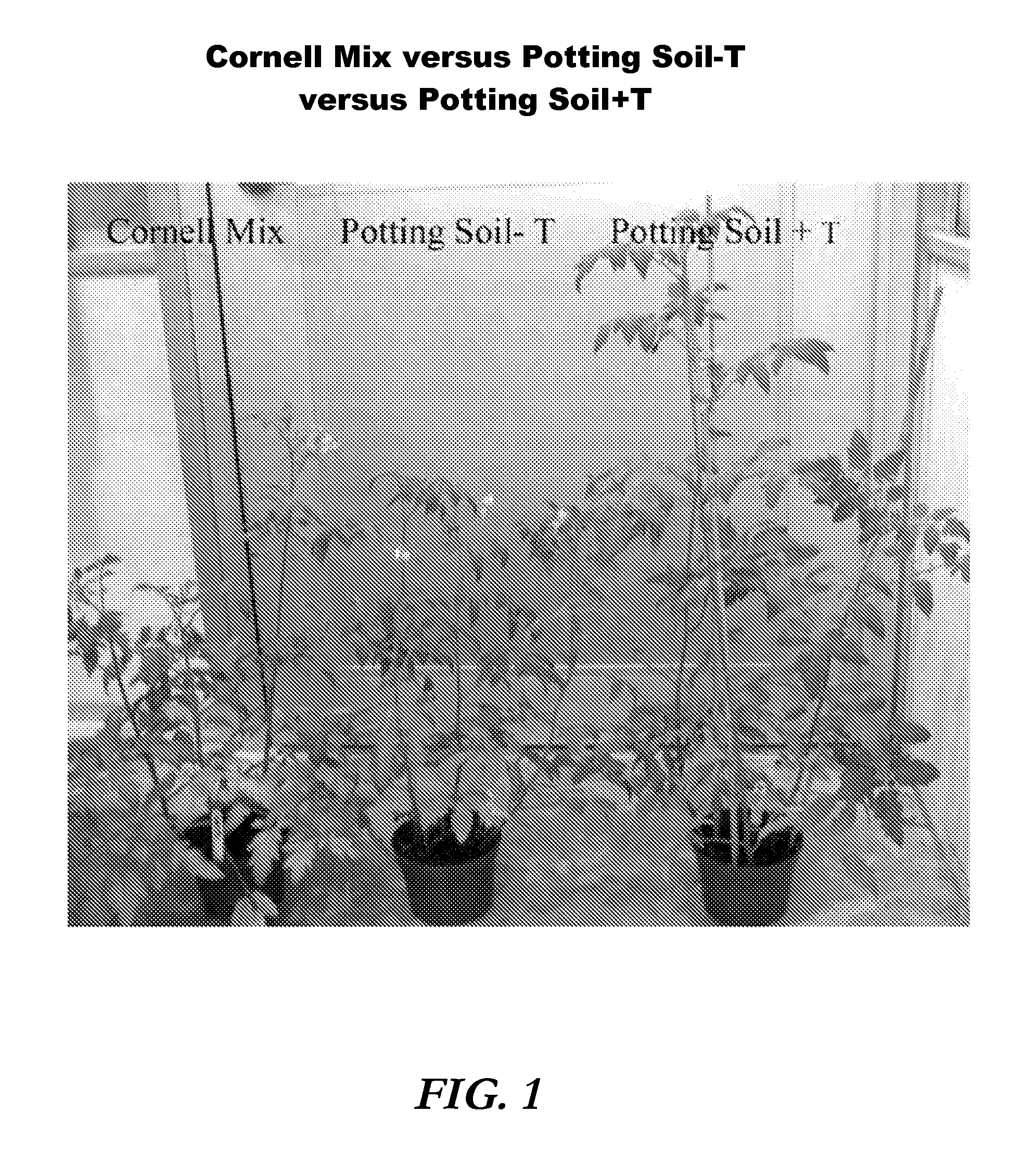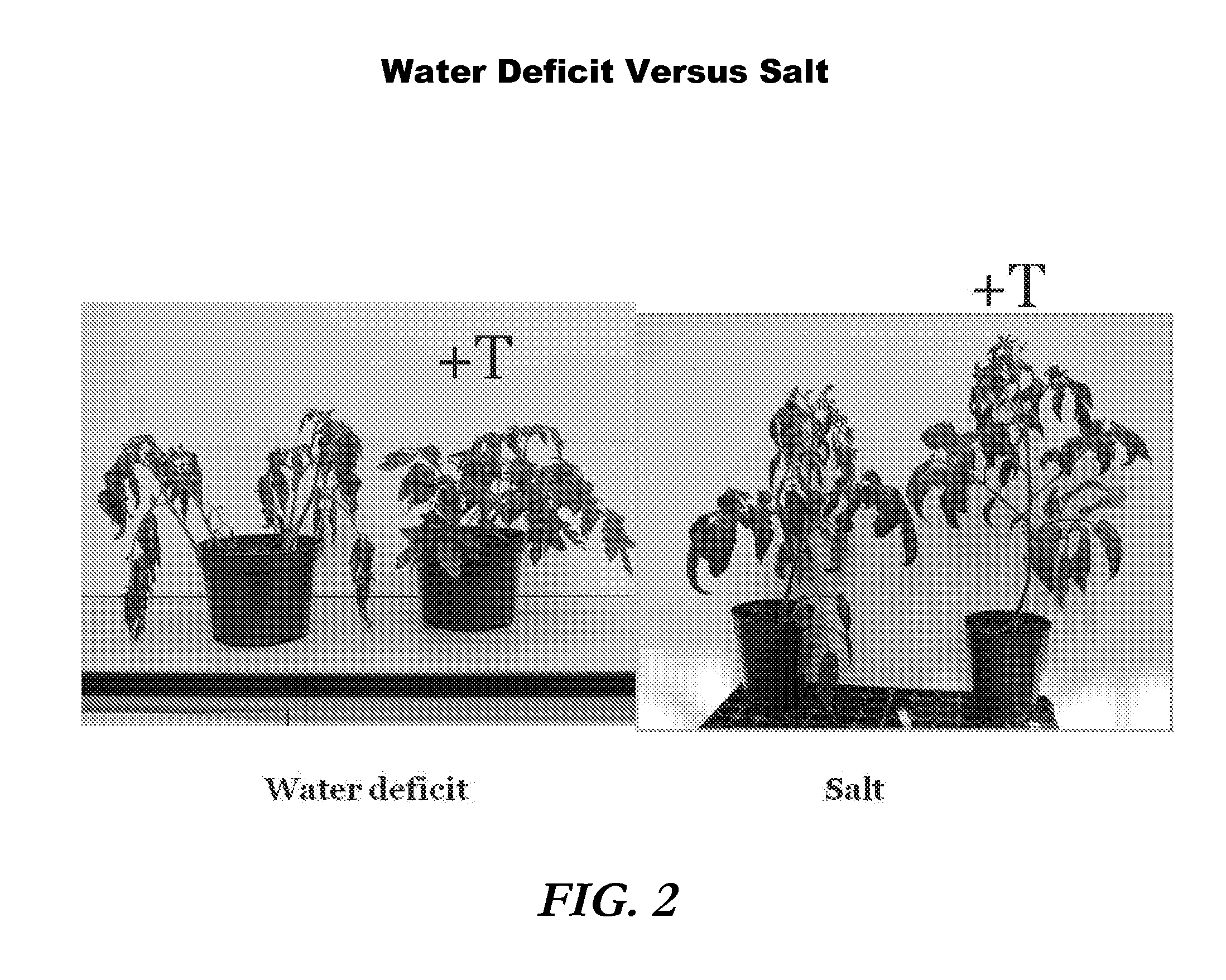Plant propagation medium and methods of making and using it
a technology plant, which is applied in the field of plant propagation medium, can solve the problems of soil contamination, greenhouse gas emissions, and serious lagged development of technology for treating waste materials from these facilities, and achieve the effects of improving the media, increasing the use of organic materials, and increasing the performance of plants
- Summary
- Abstract
- Description
- Claims
- Application Information
AI Technical Summary
Benefits of technology
Problems solved by technology
Method used
Image
Examples
example 1
Preparation of Manure
[0067]In viewing products in the greenhouse and garden market, various deficiencies became clear. One of these deficiencies deals with the very commonly used horticultural material, manure. Manures are widely used in agriculture where they provide needed organic matter and nutrients. Most of this occurs on farm fields and is outside the scope of this invention.
[0068]Various manure-based products also are sold to homeowners, landscapers and the like. In some cases (rare) users pick up the manure directly from the farm while in other cases, manure is bagged and sold by horticultural retailers. All of the products which are commercially available have serious deficiencies. They invariably have high levels of moisture (even those labeled as “dehydrated” manure), are heavy, muddy, very prone to staining clothing, hands or cars if they are spilled. Moreover, they are likely to have high salt contents that can burn plants. Commercially available manures typically conta...
example 2
Preparation of Mushroom Compost
[0078]One other material useful in the present invention is mushroom compost. This is the manure-containing material that remains when mushrooms are produced and that is then composted by several different companies. This material is useful also as a soil conditioner, and has a high nutrient analysis (typically 2.5:0.5:0.5 of N:P2O5:K2O). It is available in large quantities and is frequently used in bulk by landscapers to add nutrients and organic materials to soil.
[0079]This material was dried as noted above, and again produced a weed free material of high value. At present, there are undried mushroom compost products available, but they are heavy, typically at or about 50 lb per cubic foot, and very messy. Many retail greenhouse operators will not sell the moist product bagged, because the heavy bags are very prone to damage, and if spilled in a car interior, the stain is very difficult to remove.
[0080]The dried product of the present invention is li...
example 3
Preparation of a Useful Potting Soil
[0081]While manure is a very useful material, it is not suitable for use as a stand-alone propagation medium. It can be used as a soil amendment, as noted above and potentially as a component for potting media. Some of the difficulties with manure as a sole substrate for plant growth include the following. First, the pH of dairy manure is high, about 7.2 to 7.8. Most plants need a pH of around 6.0 to 6.8 for optimal growth. Further, the soluble P and K contents are relatively high, in most cases and, depending on the exact source of manure, around 500 ppm. This is high for optimal plant growth, and, therefore, without further washing and extraction of the wet manure, which is costly, the medium cannot be used as total replacement for peat moss, or as the primary component of potting medium for plant growth. However, as noted herein, there is a solution to this problem. These limitations do not apply when manure is used as a soil conditioner.
[0082]...
PUM
 Login to View More
Login to View More Abstract
Description
Claims
Application Information
 Login to View More
Login to View More - R&D
- Intellectual Property
- Life Sciences
- Materials
- Tech Scout
- Unparalleled Data Quality
- Higher Quality Content
- 60% Fewer Hallucinations
Browse by: Latest US Patents, China's latest patents, Technical Efficacy Thesaurus, Application Domain, Technology Topic, Popular Technical Reports.
© 2025 PatSnap. All rights reserved.Legal|Privacy policy|Modern Slavery Act Transparency Statement|Sitemap|About US| Contact US: help@patsnap.com



